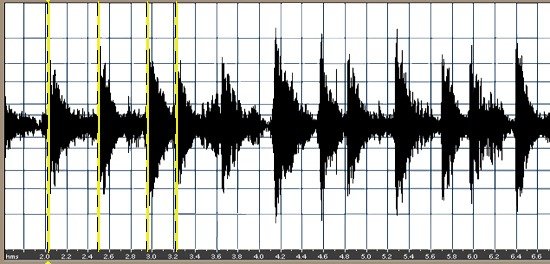
Music has always reflected the instruments used in its creation. From the initial flutes played on bone to electric guitars and vast studio equipment, the way we make music has always evolved with technology. But today’s evolution is drastic. We’re coming up with entirely new ways of making, producing, and even thinking of music. We are at a point now where the lines are blurred between machine mind and human imagination, and nowhere is this truer than in music technology. Also, the studio may come from an algorithm.
The digital wave has redefined the possibility of who can make music and what music sounds like.
Today, an independent bedroom artist can produce a track that stands up against a Grammy-nominated production. It just needs a dash of talent, truckloads of imagination, and the right tech.
Creativity Meets Code: The Role of Smart Tools in Songwriting
Whereas songwriting was ever just emotional and instinctual, today’s artists are discovering a more cooperative process, one that incorporates the machine. Whether it is a piece of software that provides chord progressions, crafts harmonies, or remasters stems into an entirely new genre, the process has developed into a dance between creation and invention. Artists are still in charge, but now they are aided by tools offering limitless inspiration.
For example, today’s artists would be able to experiment with putting synthesized vocals over organic drum patterns, or modifying the timbre of instruments through real-time audio modulation. These ideas were not so easily attempted before either due to cost, availability issues, or limitations of technology. With ease of digital tools on the rise, the experimental is gradually turning into routine. Artists are no longer restricted by genre, convention, or even the physical instrument. The entire spectrum of music lies out there, ready to be explored and shoved into new places.
Bedroom Studios and World Sounds: Breaking Down the Access Barriers
Music used to be the exclusive domain of the few. You needed studio time, expensive hardware, and a team of engineers just to get started on it. But nowadays, a laptop and headphones can do. With cheap software and user-friendly digital audio workstations, anyone can create great music. And the evidence is in the pudding: hit singles made in the kitchen, café beats that get distributed out into the world, remixes dreamed up on a bus on a smartphone.
Aside from convenience, this access is leading to a more diverse, global sound. Artists from all over the world can now work together and never have to meet face-to-face, fusing local styles with contemporary beats. Technology isn’t merely aiding music, it’s turning into the conduit of cultures, creating genres that are even new. And in a world where the increase of short-form content is gaining control, where songs are sampled and remixed with breakneck speed, these tools are assisting artists to stay in pace and get noticed.
The New Producers: When Machines Join the Band
And as the equipment becomes more electronic, so does their application in the creative process. What started as simple automation—correcting pitch or matching tempo—has evolved into direct partnership. Now, machine learning algorithms can identify patterns in sound, learn from enormous libraries of music, and even compose material on their own. They’re not replacing artists, but they’re certainly altering the process. This is especially evident in the development of AI music generators that have gone from being novelties to standard tools in most modern workflows.
These websites don’t just spew out robotic loops. They create mood-based melodies, genre-specific compositions, and even words. For artists looking for ideas or even a creative kick when writer’s block hits their point of departure is fresh. And for content creators, advertisers, and game developers, AI music translates to quicker turnaround and tailor-made soundtracks to the exact emotion or energy needed. The playing field is evening out, and smart creators are playing ball, leveraging these tools to enhance their creativity, not to cut costs.
Live Shows in the Era of Augmented Sound
Live music has always been about something else, sweat, sound, bodies, feeling. But even that world is evolving. With hybrid concerts, VR concerts, and virtual realities, the distinction between live and virtual grows thicker every day. DJs blend sets with holograms. Bands use real-time effects on instruments with augmented interfaces. Fans around the globe share the same performance, reacting in real time across different time zones.
And it’s not just all show. These technologies are allowing artists to make more nuanced soundscapes and interactive shows without sacrificing their art. With everything from live audio editing to AI-enhanced lighting and video, concerts are anything but straightforward performances. And for smaller artists who can’t tour internationally, this tech allows them to engage with fans on a profound level without a flight. The stage is wherever the Wi-Fi reaches.
Reinventing the Listener’s Role
Listeners are not longer passive consumers. Technology is sending out an invite to join in the creative process, too. Fans are able to remix hit songs, interact with music videos, and even help along with live shows with real-time feedback. AI facilitates music discovery through streaming platforms, while apps allow fans to cut up tracks, trade instrumentation, or even remix the tune themselves using preconstructed stems.
This collaborative culture is obliterating the divide between creator and fan. And though purists may snicker, to others it is the future: a musical world where everybody participates. Music is becoming communal, something that changes with every listen, share, or rework. And at the heart of it all is the technology driving it, making collaboration a magnitude bigger than ever before.
From Future Vision to the Present: What’s Coming Next
What’s most exciting about this musical moment is that it feels like we’re just getting started. Every year brings new tools, new platforms, and new forms of musical expression. We’re seeing artists who compose entire albums using only their voices and loop stations, or those who create genre-defying pieces using custom-built software instruments. The question isn’t whether music will continue evolving through tech, it’s how far we’ll let it go.
Will an AI ever headline a music festival? Will fans help write the next Billboard hit through interactive apps? Will songs adapt on the fly to the weather or your mood? It’s no longer science fiction. These scenarios are just a few lines of code away. And as innovators, creatives, and fans, we all get to be part of the remix.
Conclusion
In the rapidly evolving music technology world, innovation and creativity go hand in hand. Artists don’t have boundaries set by traditional tools anymore, and the previously defined lines between musician, producer, and listener have begun to fade away. From writing orchestral symphonies in your studio flat to creating lo-fi beats on a journey home from work, today’s technology enables you to turn your sound into reality in ways previously unimaginable.
What makes this instant so enchanting is t emotion, its connection, its storytelling,not just altered. The gear can evolve, but the soul of the song remains the same. It’s not man versus machine anymore. It’s man with a machine exploring new creative realms in unison.



